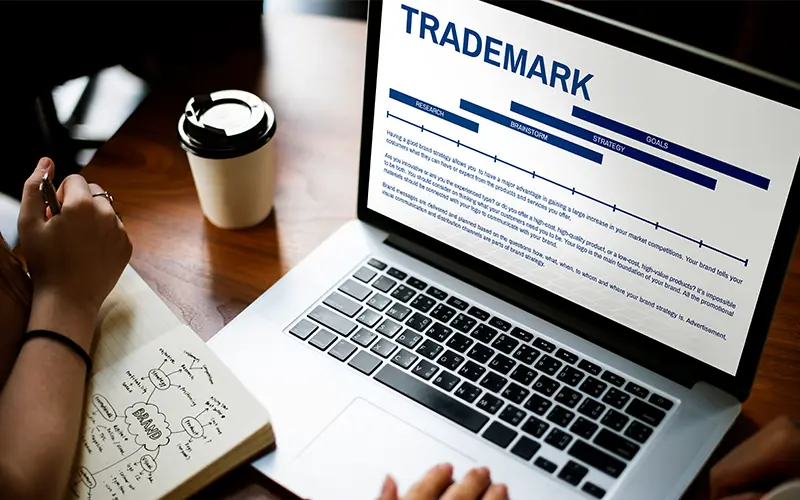Trademark Objection
- Home
- »
- Trademark Objection

Trademark Objection
Trademark objection is a formal step in the trademark registration process where the Registrar raises concerns about the application. These objections can arise due to several reasons, such as similarity with an existing registered trademark, descriptive nature, likelihood of causing confusion among consumers, or non-compliance with the regulations of the Trademark Act. When an objection is raised, the applicant receives an examination report outlining the reasons. The applicant must respond within a specified time, typically 30 days, by filing a reply or attending a hearing to address the objections. Providing a detailed response with supporting evidence and legal arguments is crucial to overcome the objection. Successfully addressing the objections allows the application to proceed towards registration, ensuring the protection of the trademark.
What is Trademark Objection?
Trademark objection is a formal response from the Trademark Registrar when an application for trademark registration does not meet the required legal criteria. Objections can be raised for various reasons, such as similarity to existing trademarks, descriptiveness, potential to mislead consumers, or non-compliance with the Trademark Act. When an objection is issued, the applicant receives an examination report detailing the concerns. The applicant must respond within 30 days, providing a comprehensive reply or attending a hearing to address the issues raised. Successfully overcoming the objection allows the trademark application to proceed towards registration, securing legal protection for the trademark.

Trademark Objection Process
The trademark objection process involves several key steps:
Examination Report: After filing a trademark application, the Registrar examines it to ensure compliance with legal requirements.
Objection Raised: If the Registrar identifies issues (e.g., similarity to existing trademarks, descriptiveness), they issue an examination report outlining the objections.
Notice to Applicant: The applicant receives the examination report, typically within a few months of filing.
Response: The applicant must respond to the objections within 30 days from receiving the examination report. This involves addressing each objection with legal arguments, evidence, and amendments if necessary.
Hearing (if required): In some cases, a hearing may be scheduled to discuss the objections and applicant’s response.
Decision: Based on the response and any hearing, the Registrar decides to either accept the trademark for publication or maintain the objection.
Further Action: If objections are upheld, the applicant can appeal the decision or make amendments to address concerns.
This process ensures that only eligible trademarks are registered, maintaining the integrity of the trademark registry.
Examination Report: After filing a trademark application, the Registrar examines it to ensure compliance with legal requirements.
Objection Raised: If the Registrar identifies issues (e.g., similarity to existing trademarks, descriptiveness), they issue an examination report outlining the objections.
Notice to Applicant: The applicant receives the examination report, typically within a few months of filing.
Response: The applicant must respond to the objections within 30 days from receiving the examination report. This involves addressing each objection with legal arguments, evidence, and amendments if necessary.
Hearing (if required): In some cases, a hearing may be scheduled to discuss the objections and applicant’s response.
Decision: Based on the response and any hearing, the Registrar decides to either accept the trademark for publication or maintain the objection.
Further Action: If objections are upheld, the applicant can appeal the decision or make amendments to address concerns.
This process ensures that only eligible trademarks are registered, maintaining the integrity of the trademark registry.
Expert Consultant for Trademark Objection
Examination Report: After filing a trademark application, the Registrar examines it to ensure compliance with legal requirements.
Objection Raised: If the Registrar identifies issues (e.g., similarity to existing trademarks, descriptiveness), they issue an examination report outlining the objections.
Notice to Applicant: The applicant receives the examination report, typically within a few months of filing.
Response: The applicant must respond to the objections within 30 days from receiving the examination report. This involves addressing each objection with legal arguments, evidence, and amendments if necessary.
Hearing: In some cases, a hearing may be scheduled to discuss the objections and applicant's response.
Objection Raised: If the Registrar identifies issues (e.g., similarity to existing trademarks, descriptiveness), they issue an examination report outlining the objections.
Notice to Applicant: The applicant receives the examination report, typically within a few months of filing.
Response: The applicant must respond to the objections within 30 days from receiving the examination report. This involves addressing each objection with legal arguments, evidence, and amendments if necessary.
Hearing: In some cases, a hearing may be scheduled to discuss the objections and applicant's response.
Trademark objection occurs when the Registrar raises concerns about an application during examination, citing reasons such as similarity or descriptiveness. In contrast, trademark opposition is a formal procedure initiated by a third party within a specific period after publication of the trademark, challenging its registration on grounds like similarity to their mark or potential confusion among consumers.
Clarifies Legal Standing: Helps applicants understand potential issues with their trademark application early in the process.
Opportunity for Amendment: Allows applicants to modify their application to address objections and enhance chances of successful registration.
Prevents Legal Disputes: Resolves potential conflicts preemptively, reducing the likelihood of trademark infringement claims in the future.
Protects Brand Integrity: Ensures that registered trademarks maintain distinctiveness and do not infringe on existing rights.
Opportunity for Amendment: Allows applicants to modify their application to address objections and enhance chances of successful registration.
Prevents Legal Disputes: Resolves potential conflicts preemptively, reducing the likelihood of trademark infringement claims in the future.
Protects Brand Integrity: Ensures that registered trademarks maintain distinctiveness and do not infringe on existing rights.
